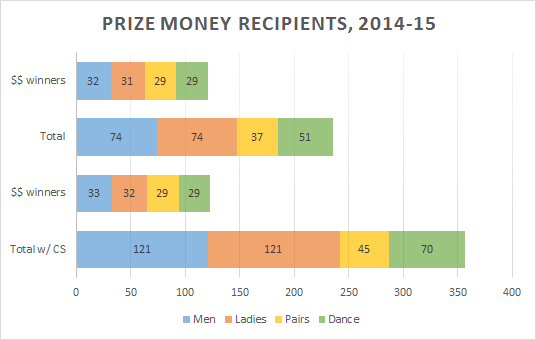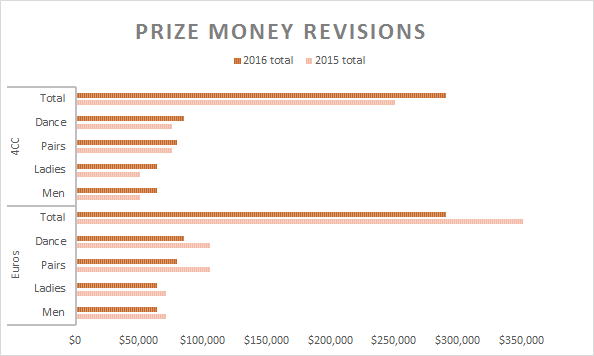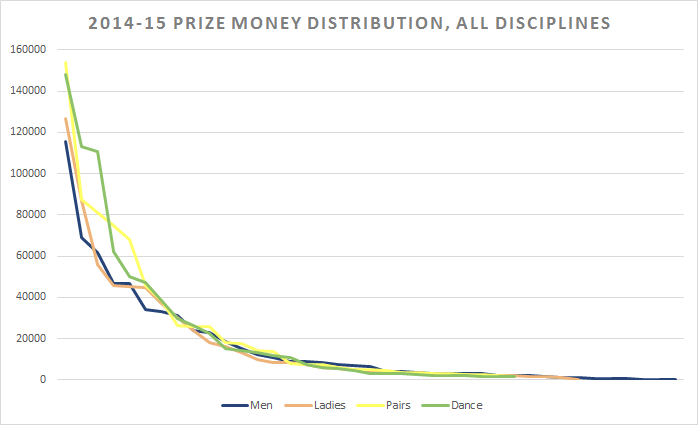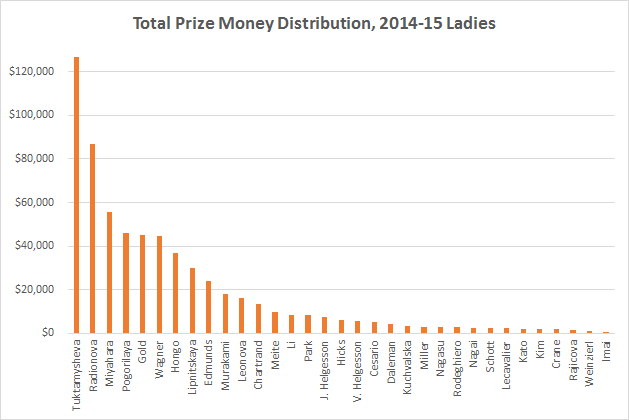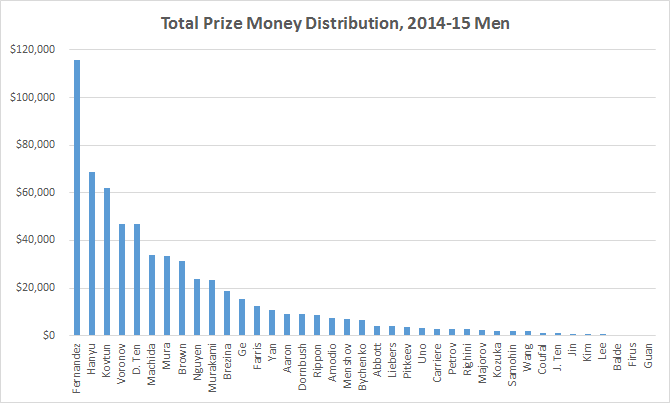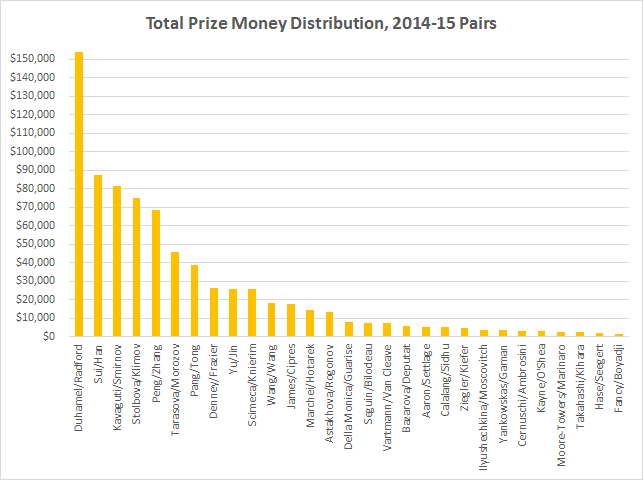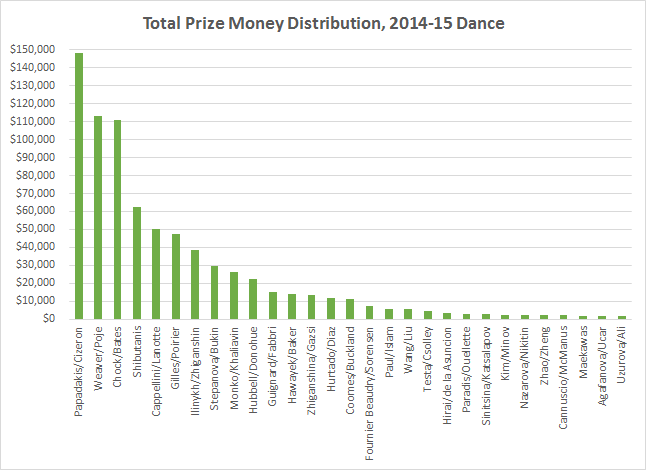by Jacquelyn Thayer
While this project has been in the works for a period, the topic of funding in figure skating has recently come to popular attention, with PJ Kwong and pair Hayleigh Bell and Rudi Swiegers highlighting specific costs of training; others relying on crowdfunding have also taken care to note the financial effort that goes into executing a career on ice.
Finances in figure skating are no small matter; careers can be made and broken by the simple question of who can fund a year’s training and travel. And the impact can extend beyond a retirement. In another sport with minimal overhead expense and maximum opportunity, funding issues may have little impact on competitive outcome. But in figure skating — and particularly in North America — costs of components like elite coaching, training time and competition travel tend to create an edge for those skaters able to maximize all. Well-trained skaters with well-known coaches and considerable competitive exposure and experience are simply better positioned to achieve than unknowns who may be seen as lagging technically and artistically.
Over the next several weeks, through research, data analysis and athlete commentary, we’ll be examining a series of factors underpinning financial support in figure skating, including prize money, organizational funding, commercial opportunity and crowdfunding. What direct connection there can be between financial advantage and achievement remains to be seen — but it’s worth exploring.
♦
Prize money, to begin, is the ISU’s official manner of compensating its athletes, available to those representing any national federation, provided a specified top level finish. As of 2014-15, the season we’ll analyze here, that finish included top 12 placements at the three ISU championships and top five at the six Grand Prix events, as well as all senior Grand Prix Finalists. Communication 1976, however, indicates the ISU’s intention to tighten up such lavish reward, in manners detailed below.
So this question of skater funding is first one of direct reward: results = monetary gain, however minimal an impact that gain may have in real terms, particularly given the matter of taxes and the provision that the skater’s ISU member, which officially serves as a middle man between awarding body and athletes, may retain up to 10% of winnings related to bank fees and charges. And if we follow the argument that funding impacts outcome, prize money certainly adds another intriguing layer.
A few disclaimers before embarking upon this analysis. Prize information derives entirely from ISU documentation. For the handful of skaters who competed at both junior and senior levels internationally, only senior prizes are included in order to present a relatively level field of comparison.1 Competitions under consideration here are those with publicly stated monetary prizes, i.e. Grand Prix events, ISU championships and the Challenger Series — wherein money is awarded on a final standing, rather than event to event, basis. Missing here is data from the Japan Open — which includes skaters retired from amateur competition and, given its structure, might fall into a gray range between show and competition — and World Team Trophy, which awards prize money of $200,000 through $130,000 to its team entries, rather than per individual skater or couple, with some variability possible in its distribution.2 Because participants were, by the event’s nature, primarily among the season’s most successful skaters, the absence of this competition’s funds would likely have minimal impact on the macro findings of this analysis.
♦
In a situation in which prize money is distributed by placement, results can become a concrete matter. The .06 points that separated 2014 World ice dance bronze medalists and champions equated to a difference of $40,500. A fifth or sixth place finish at one of the six Grand Prix events means the difference between $2,000 and empty hands.3
Historically, prize money has not been disseminated equally. Rewards at the European Championships, which typically boast a large field, have been greater by standing than those presented at the roughly equivalent Four Continents Championships; European skaters, then, have in theory had a slightly greater opportunity to earn than have their counterparts. A European champion pair or dance team received $30,000 to the $22,500 for a Four Continents couple; the disparity between silver medalists at each event has ranged from $4,000 to $6,000. Only twelfth-place finishers have seen an even distribution–$1,000 per individual and $1,500 per team at each event. Communication 1976, however, promises to “harmonize” the championships; Four Continents finishers will as of this season pick up winnings equal to those of their European compatriots — but certain of 2014’s competitors, as we’ll see, may have benefited more in other respects.
Opportunity for reward also varies by discipline. It’s simple math; Grand Prix events allow for up to 12 singles entries to eight for pairs and dance; more importantly, more singles skaters simply exist to fill championship rosters. So while 42-43% of men’s or ladies’ skaters on the Grand Prix and championship circuits received any amount of prize money, 57% of dancers and a stunning 78% of pairs did. The numbers are even more dramatic when participants in the Challenger Series, with significantly less restrictive demands for entry, are included:
This addition expands the pairs entry list by only eight teams, compared with 19 for dance and the nearly unfathomable 47 apiece for singles. So it may be unsurprising that one of the revisions declared by Communication 1976 sees prize money rewards at Worlds restricted to only the top eight finishing pairs; similarly, dance prizes will now be limited to those within the top 10.
But the cut-off among European and Four Continents competitors is more significant: finishers 1-8 in singles, 1-6 in dance and 1-5 in pairs. For Euros, this results in a 15% reduction in prize money distribution, and would as well if applied to 2014-15’s 4CC prizes — though the increase in prize funds for 2016 actually means a total payout of $39,500 greater than last year’s more widely-disseminated payout of $250,000.
♦
So how, exactly, has prize money distribution actually broken down at the individual level? In the end, quite similarly across the four disciplines, with the caveat that, outside of Grand Prix events, teams receive slightly larger sums per placement than their singles counterparts:
With Challenger events included, a mere 26% of ladies (32 athletes) and 27% of men (33 athletes) eligible to obtain prize money did so. The top five prize earners in each discipline took home a little better than half of the season’s $609,000 (per discipline) in prize funds — excluding exhibition fees — on offer, at a rate of 54.7% of men’s earnings and 58.2% of ladies’; with inclusion of $18,200 for men and $16,100 for ladies in exhibition fees, rates remain essentially unchanged.
As held true across all four disciplines, world champions made out best of all, but inconsistency in the men’s discipline makes for a more colorfully mixed earnings outcome:
Because the global pairs field is small, particularly compared against the other disciplines, such a steep pattern of distribution is relatively unstartling. Duhamel and Radford swept their competition slate, but they were not alone in dominating the international medal hunt. While 12 different teams medaled at Grand Prix and championship events — the competitions with the significant payouts—half of those teams did so on three or more occasions. The major exception are Pang and Tong, who competed only twice — but at Four Continents and Worlds, good enough for $38,700 including exhibition fees 4
But in terms of global scope, dance is certainly better represented than its fellow coupled discipline — but distribution may not reflect that very well. Despite a larger field of 51 teams — 14 more than pairs — here, too, 12 teams medaled across all major events, but distribution was steeper, with three of those teams medaling at all five of their competitions.
Goosed by that limited rate of distribution — and of podium success — prize money for the top five pairs teams comprised 71.3% of the total, with the 23.7% to Duhamel and Radford the largest for any individual or team. But even within the wider dance field, top five couples still absorbed 62.2% of the total payout. Among the teams in both disciplines in the lowest range of reward are current national medalists from both the U.S. and Canada, all international medalists; elevated in some cases are couples with lower or par ISU personal bests, but the benefit of smaller country representation and thus expanded opportunity.
This season, a grand total of $2,617,7505 — exhibition fees once more excluded — has or will be distributed among competitors in the four major disciplines. With a now narrower field of payout, how much more might prizes weigh among the top tier?
NOTES
- According to Communication 1924, prizes for top 12 Junior Worlds singles competitors ranged from $10,000 to $1,000, and $15,000 to $1,500 for couples. Junior Grand Prix medalists earned $2,000, $1,500 and $1,000 per single skater and $3,000, $2,250 and $1,500 per couple.
- According to the ISU’s 2015 WTT announcement, “For example, a team having completed the competition with all the 8 Skaters, each Skater will receive 1/8 of the Prize Money awarded to the team, i.e. 1st place US$ 200’000 less possibly 10% for the Member = US$ 180’000 with 1/8 being US$ 22’500. A team having completed the competition with 7 Skaters, each Skater will receive 1/7 of the Prize Money awarded to the team, i.e. 1st place US$ 200’000 less possibly 10% for the Member less 12.5% for one Skater not having completed the competition = US$ 157’500 with 1/7 being US$ 22’500, and so forth.”
- The Grand Prix Final, at which each of the six competitors per discipline receives prize funds ranging from $25,000 to $3,000, is the exception.
- In a typical show of inconsistency, Grand Prix events provide an exhibition fee of $200/$300 only for participants outside the top five, presenting a small opportunity for those who did not receive prize money. However, the three championships provide exhibition fees of $900/$1,350 for medalists and $700/$900 for other entrants–reinforcing our thesis just a little.
- Grand Prix series = $1,080,000;
Grand Prix Final = $272,000;
Euros, 4CC = $289,500 each;
Worlds = $686,750

